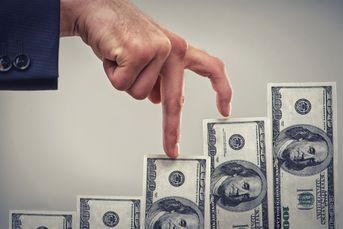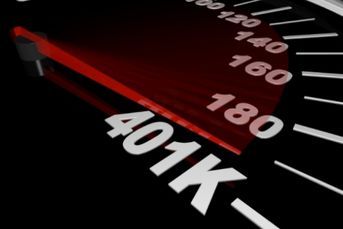Odd couple stocks and bonds finally decoupling
Stocks and bonds have been unlikely dance partners for the past few years. Now, it appears the two are no longer moving in lockstep.
Capitulating bears and overseas buyers are drowning out every other concern for American stocks, pushing the Standard & Poor’s 500 Index (SPX) to successive records even after the biggest drop in Treasury yields since June.
The Standard & Poor’s 500 Index closed at all-time highs twice last week and hasn’t traded more than 1.8 percent away from its record in the 23 days since March 11, according to data compiled by Bloomberg. The 2.1 percent advance over that period came as rates on 10-year government bonds tumbled 0.36 percentage point to as low as 1.7 percent. Plunges of that size coincided with losses of 4.6 percent for equities since 2010.
Bulls say U.S. shares are becoming less vulnerable to global shocks and will keep rallying as skepticism eases among professional investors. Gains such as the 1.2 percent advance on April 10 have been accompanied by even bigger jumps in companies with the most short interest. Bears say indiscriminate buying shows the rally is in its last stages and stocks will fall as earnings drop and Federal Reserve stimulus ends.
“New highs are bringing in buyers, people who have been on the sidelines,” Paul Zemsky, the New York-based head of asset allocation for ING Investment Management which oversees $180 billion, said by phone April 11. “People have been afraid of the stock market, they still remember 2008. But as time goes on and as equity prices go up they’ll continue get more comfortable and we’ll continue to see flows into equities.”
Successive Records
It’s unclear if the tragic events at the Boston Marathon on Monday will rattle the equities market longterm. But the S&P 500 advanced 2.3 percent last week, the biggest gain since January, and closed at successive records of 1,587.73 and 1,593.37 on April 10 and April 11. The benchmark index dropped 2.3 percent to 1,552.36 today.
The gauge has climbed 11 percent this year as U.S. Fed Chairman Ben S. Bernanke pledged to hold interest rates near zero percent and maintain the program of bond purchases known as quantitative easing, or QE.
Gains were led by stocks that had fallen in 2013. First Solar Inc. (FSLR), the Tempe, Arizona-based power technology developer, has jumped 38 percent since sliding 13 percent in the first quarter. Cliffs Natural Resources Inc. (CLF), the Cleveland-based iron-ore mining company, rallied 8.8 percent on April 9, its biggest increase since September. The shares were down 52 percent for 2013 before last week.
Lockstep Moves
The stock-market rally last week was a departure from increasingly lockstep moves among equity prices and bond yields, where correlations in 2013 have reached record highs. U.S. equities and bond rates have moved in the same direction 80 percent of the time this quarter as investors sold fixed-income securities amid signs of an improving economy, compared with an average of 63 percent of the time since the S&P 500 began tumbling from the October 2007 record, according to data compiled by Bloomberg.
While close moves between yields and stocks increased, bonds have risen with equities since 2009 as the Fed spent more than $2 trillion buying securities. U.S. Treasuries have gained 18 percent, according to Bank of America Corp. indexes, since the S&P 500 kicked off a 135 percent rally in March 2009.
Treasury yield declines in the past month came as Cyprus imposed losses on uninsured depositors and Bank of Japan Governor Haruhiko Kuroda said he will double monthly bond buying to 7.5 trillion yen ($80 billion), pushing the Asian nation’s investors to shun their government’s bonds in favor of U.S. Treasuries. The Fed is buying $85 billion a month in bonds.
Weakening Yen
“The policy goal of weakening the yen has driven investors into other currencies where higher yields are available, including the dollar and euro bond markets,” said Howard Ward, chief investment officer at Rye, New York-based Gamco Investors Inc., which oversees $36.7 billion. “Some of this capital flight out of the yen also finds its way into equity markets.”
Japanese investors bought a net 645 billion yen of foreign equity securities in the week ended March 23, according to Japan’s Ministry of Finance. That’s the highest level since the data began in 2005. Purchases reached 1.61 trillion in March, also a record, the data show.
Stocks have climbed as pessimism among the biggest speculators diminished. A gauge of hedge-fund bullishness measuring the proportion of their holdings that represent wagers on rising stocks climbed to 51.6 percent last week, up from 47.3 at the end of 2012, according to data compiled by International Strategy & Investment Group in Washington.
Short covering helped drive gains last week. An index of S&P 500 companies with the most bearish bets increased 5.1 percent during the first four days of last week, increasing more than the equity gauge each day. The basket compiled by Goldman Sachs Group Inc. (GS) has rallied 16 percent in 2013, about four percentage points more than the S&P 500.
Overweight Equities
A net 57 percent of global money managers, who together oversee about $578 billion, said they were overweight on equities last month, the highest reading since early 2011, according to a Bank of America Corp. survey released March 19. That’s up from 51 percent in February. Holdings in U.S. stocks were at their highest level in eight months, it showed.
Stocks climbing as yields decline “is not inconsistent,” Johanna Kyrklund, who helps oversee $345 billion at Schroder Investment Management in London, said in an interview on April 11. “The bond yield fell because we had a slight weakening in the data, and people are buying equities because they are looking for return,” she said. “You don’t need a global recovery for that rally to continue.”
Plunges in Treasury yields matching the decline since mid- March have accompanied weakening equity prices 12 out of 14 times since 2010, according to data compiled by Bloomberg.
Government Bonds
Government bond rates slid 37 basis points between May 9 and June 3 as the U.S. added fewer jobs than forecast, the economy grew slower than previously estimated and rising unemployment in Spain sparked concern Europe’s sovereign-debt crisis would spread. The stock index decreased 5.7 percent during the period.
Rising borrowing costs in Spanish and French bond sales in November 2011 pushed U.S. rates down 43 basis points, as investors speculated European woes would lead to a global slowdown. At the same time, the S&P 500 lost 9.6 percent. Stocks declined 14 percent as bond yields lost more than a percentage point from July to September 2011 as lawmakers were failing to reach an agreement on raising the U.S. debt limit.
April has marked the beginning of the biggest stock market retreats since 2009. The S&P 500 fell 9.9 percent from April 2 through June 1 last year, before surging to a record last month. In 2011, the index slumped 19.4 percent, its biggest decline of the bull market, then recovered to end the year within a point of where it started. The 2010 drop started April 23, with the index declining 16 percent through July.
“Listening to what investors are telling us, they are waiting for a correction,” Alan Mudie, who helps oversee $87 billion as chief investment officer at Union Bancaire Privee in Geneva, said April 11. “That often acts as something of a contrarian phenomenon. When investors in the sidelines are waiting to get in, the pain trade is for the market to grind higher.”
Job creation sputtered in March as employers hired fewer people than forecast, Labor Department data showed April 5. A report from the Institute for Supply Management showed that service industries expanded in March at the slowest pace in seven months, signaling the economy may find it hard to accelerate.
Falling Earnings
U.S. companies will post their first profit contraction since 2009 this quarter, according to the average of more than 11,000 analyst forecasts compiled by Bloomberg. The projected 1.4 percent drop comes after growth slowed last year to a quarterly average of 4.7 percent, compared to 28 percent in 2010 and 2011. Of 30 companies that have reported results so far, 21 have exceeded analyst estimates.
“We are a bit more surprised by the resilience of equities than by the strong performance in bonds,” Joost van Leenders, who helps oversee $657 billion as a strategist at BNP Paribas Investment Partners in Amsterdam, said in an April 9 phone interview. “We think some of the fundamentals in the economy are changing, and that will have an impact on earnings.”
Rebounds in stocks after crises from surging debt in Greece to S&P’s decision to strip the U.S. of its AAA credit rating in August 2011 make future threats less daunting, said James Paulsen, the Minneapolis-based chief investment strategist at Wells Capital Management, which oversees about $325 billion of assets.
Jobless Claims
The S&P 500 rallied 0.4 percent on April 4 even as jobless claims unexpectedly increased, while bond yields fell to 1.76 percent. On Jan. 18, stocks rose to a five-year high on better- than-estimated earnings from General Electric Co. (GE) and Goldman Sachs, as rates dropped to 1.84 percent after policy makers failed to resolve debt-limit increases.
Equities rallied 10 percent in the first quarter, pushing the S&P 500 to a new record, buoyed by an influx of money to equity mutual funds. Retail investors have added about $19.5 billion to mutual funds that invest in U.S. equities in 2013, according to Washington-based Investment Company Institute. While that’s the best start to a year since 2006, deposits follow almost $400 billion taken out the last four years.
“People have been burned enough,” Paulsen said in an April 9 phone interview. “They sold out just to watch stocks rally to new highs in 2012 and 2011 on stories of the end of the world that never came to pass. Stock investors are starting to say, ‘I don’t know if I still buy that view.’”
–Bloomberg News–
Learn more about reprints and licensing for this article.






